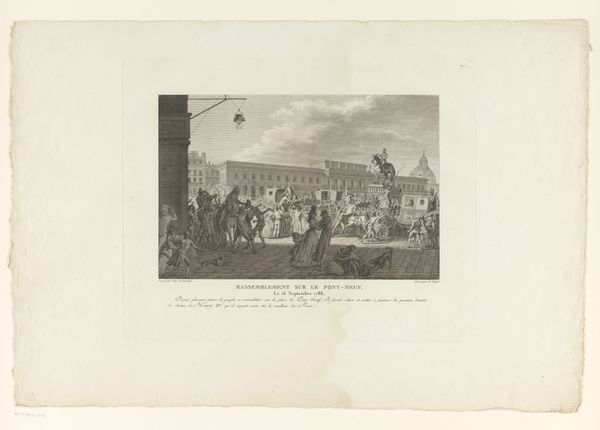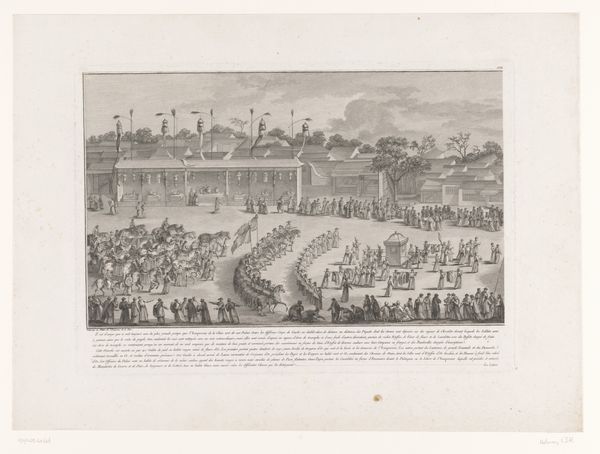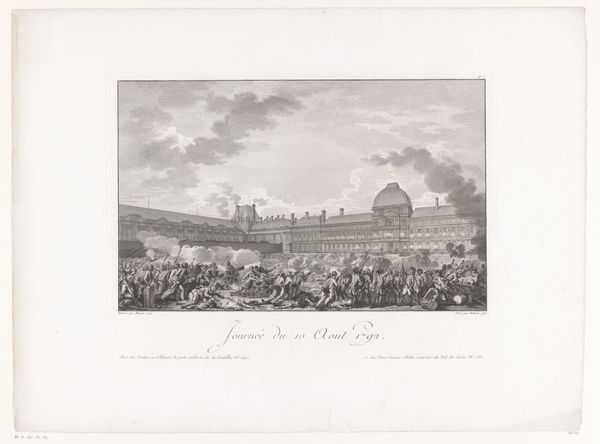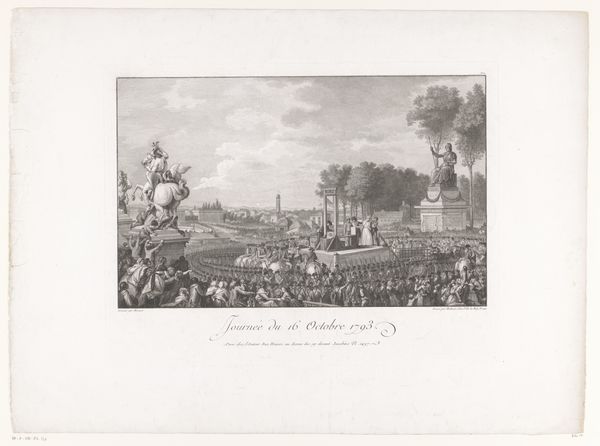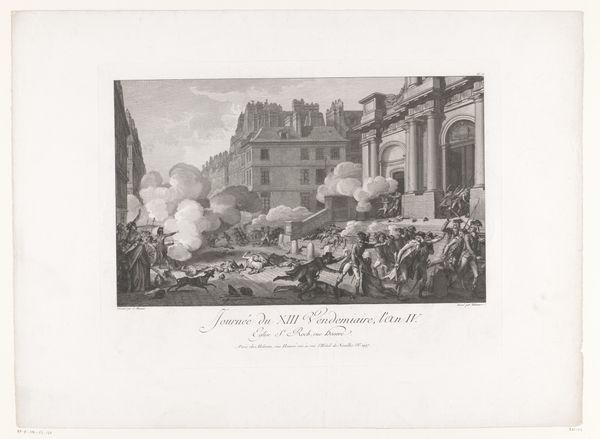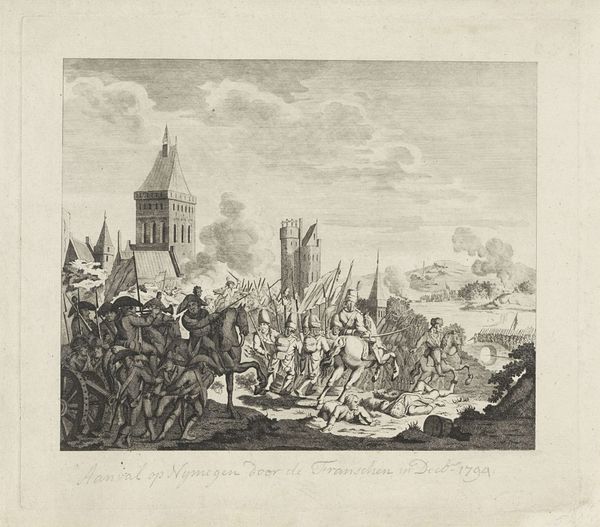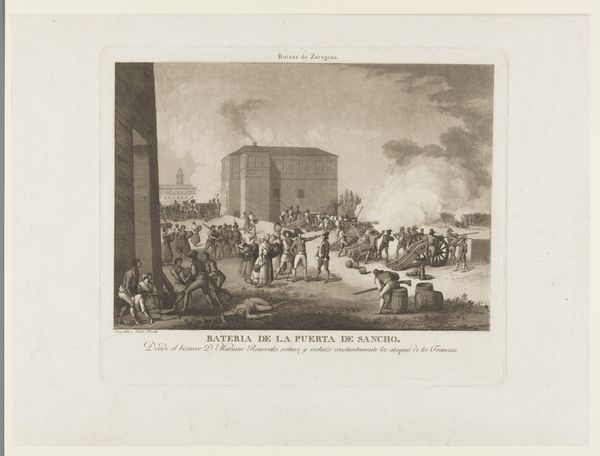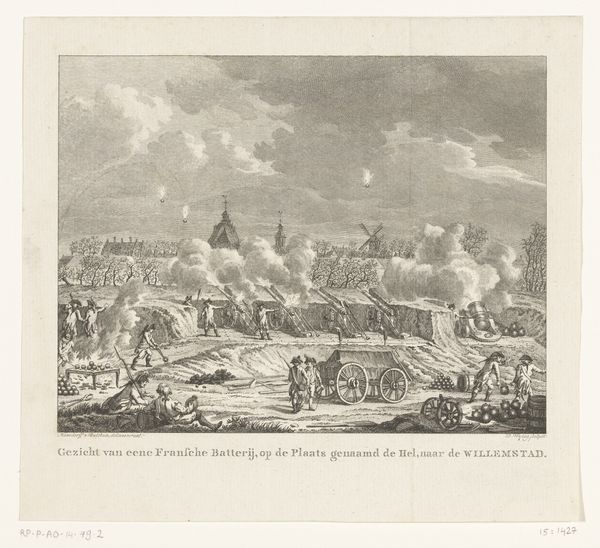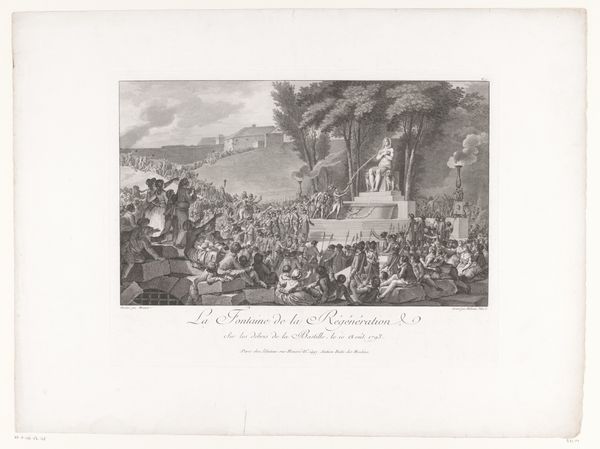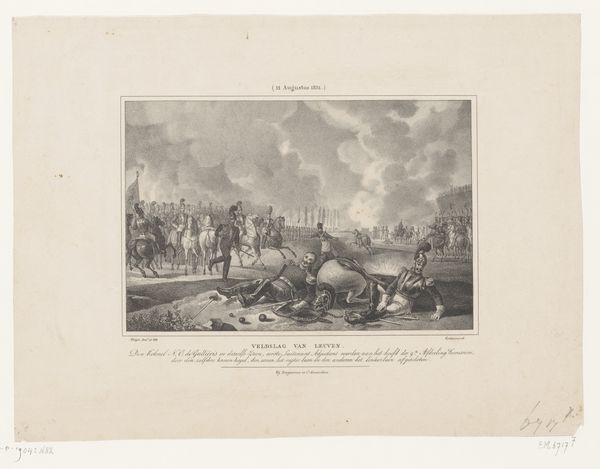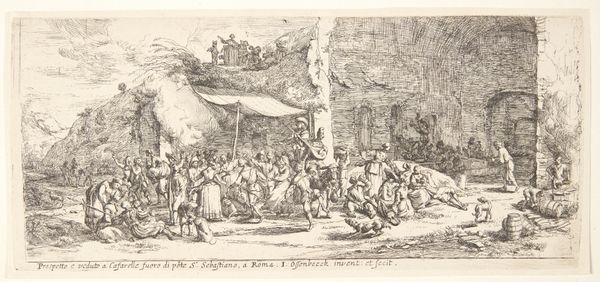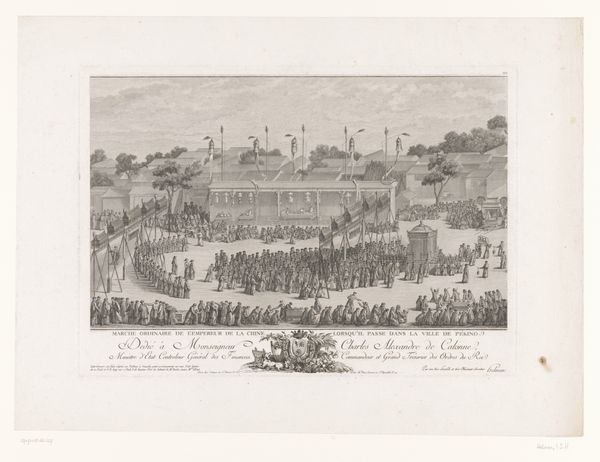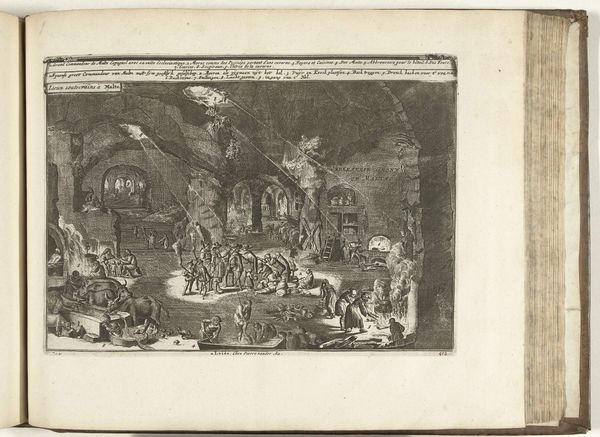
Eed in de Salle du Jeu de Paume te Versailles met allegorische voorstelling 1792
0:00
0:00
print, engraving
#
neoclacissism
#
narrative-art
# print
#
old engraving style
#
history-painting
#
engraving
Dimensions: height 351 mm, width 465 mm
Copyright: Rijks Museum: Open Domain
Isidore-Stanislas Helman made this print of the Tennis Court Oath in Versailles using etching and engraving. These are both intaglio processes, meaning the lines of the image are cut into a metal plate, which is then inked and pressed onto paper. The controlled lines of the printmaking medium give a crisp clarity to the scene. Through these lines, Helman emphasizes the architectural space in which the event takes place. It is within this architectural space, however, that he sets up a conflict between the geometry of the space and the chaotic crowd. This contrast reflects the larger social context of the French Revolution, which was characterized by upheaval and change. By choosing to depict this event in print, Helman was able to reproduce and disseminate it widely. This allowed the image to serve as propaganda, spreading the ideals of the revolution and inspiring others to take action. The work thus serves as a reminder of the power of images to shape public opinion and influence the course of history.
Comments
No comments
Be the first to comment and join the conversation on the ultimate creative platform.
